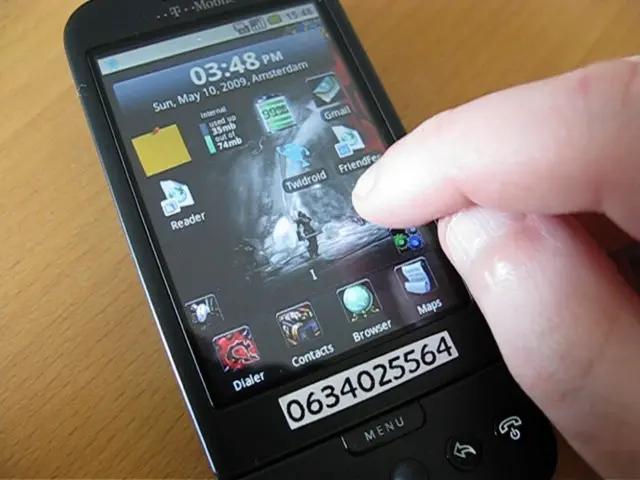Top Seven Potential Causes for Scrotal Itching
Itchy testicles can be a source of discomfort and concern for many men. This article aims to provide a clear understanding of the common causes and effective treatments for this issue.
Various fungal, bacterial, parasitic, and dermatological conditions can lead to itchy testicles. Fungal infections, such as jock itch (tinea cruris) and yeast infections, are common culprits. These infections thrive in warm, moist areas like the groin and inner thighs, causing inflammation and persistent itching.
Bacterial infections, such as erythrasma, can also contribute to itchy testicles. This condition, caused by Corynebacterium minutissimum, presents as itchy, scaly patches in skin folds.
Parasitic infections, like trichomoniasis, can cause itching or irritation inside the penis and sometimes discharge. This sexually transmitted infection (STI) is caused by a parasite.
Chronic skin conditions, such as lichen simplex chronicus (itchy red scrotum syndrome), can also lead to persistent itching and redness. This condition is thought to be a result of repetitive scratching and chronic inflammation.
Other causes, like Fordyce spots or whiteheads, are typically benign skin bumps that do not usually cause itching. However, new or persistent skin lesions around the testicles should be evaluated by a doctor to rule out infections, STIs, or other concerns.
Treatment for itchy testicles depends on the underlying cause. Fungal infections can be treated with antifungal creams like clotrimazole or nystatin, while bacterial infections require antibiotics like erythromycin or clindamycin. Parasitic infections like trichomoniasis are treated with antibiotic medications prescribed by a healthcare provider, and sexual partners should be treated simultaneously to avoid reinfection.
Lichen simplex chronicus requires management to stop the itch-scratch cycle, often with topical corticosteroids and antihistamines, but treatment can be challenging and may require specialist care.
General hygiene practices can also help prevent and soothe itching. Keeping the area clean and dry, avoiding irritants, wearing loose-fitting clothing, and using hypoallergenic products are all recommended.
If itching persists, worsens, or is accompanied by other symptoms like sores, discharge, or pain, it is essential to consult a healthcare professional for diagnosis and appropriate treatment. Avoid scratching, as it can worsen symptoms or lead to infection.
Contact dermatitis, caused by an allergic reaction to new substances like body wash, washing detergent, personal deodorants, or moist toilet wipes, can also cause an itchy rash on the testicles. Chafing, caused by constant, prolonged rubbing on an area of skin, often during physical activities like running or biking, can also lead to itchy testicles.
Genital herpes, a common STI, can cause an itchy rash to appear on the skin, which may turn into blisters that burn and eventually burst, leading to painful sores. Genital warts, associated with the human papillomavirus (HPV), can also cause itchy bumps on the scrotum and other areas of the genitals.
Crabs, or pubic lice, may cause itchy balls by causing tiny bites that are uncomfortable. To prevent some STIs, it is important to use proper protection during sexual activity and to know the sexual history of a partner.
In conclusion, itchy testicles can be caused by a variety of factors, ranging from common fungal infections like jock itch to more complex conditions like lichen simplex chronicus. It is essential to maintain good hygiene, be aware of potential causes, and seek medical attention when necessary to ensure proper diagnosis and treatment.
- Fungal infections like jock itch (tinea cruris) or yeast infections can lead to itchy testicles due to inflammation in warm, moist areas.
- Bacterial infections, such as erythrasma, can also cause itchy testicles, presenting as itchy, scaly patches in skin folds.
- Parasitic infections, such as trichomoniasis, can cause itching or irritation inside the penis and sometimes discharge.
- Chronic skin conditions, like lichen simplex chronicus, can lead to persistent itching and redness on the scrotum.
- Fungal infections can be treated with antifungal creams like clotrimazole or nystatin, while bacterial infections require antibiotics.
- Parasitic infections like trichomoniasis are treated with antibiotic medications prescribed by a healthcare provider.
- Lisa simplex chronicus requires management to stop the itch-scratch cycle, often with topical corticosteroids and antihistamines.
- General hygiene practices, such as keeping the area clean and dry, avoiding irritants, and using hypoallergenic products, can help prevent and soothe itching.
- If itching persists, worsens, or is accompanied by other symptoms like sores, discharge, or pain, it is essential to consult a healthcare professional.
- Contact dermatitis, caused by an allergic reaction to new substances, can cause an itchy rash on the testicles.
- Crabs (pubic lice) may cause itchy balls by causing tiny bites that are uncomfortable.
- Genital herpes, a common STI, can cause an itchy rash on the skin, leading to painful sores.
- Genital warts, associated with the human papillomavirus (HPV), can also cause itchy bumps on the scrotum and other areas of the genitals.
- Maintaining good hygiene, being aware of potential causes, and seeking medical attention when necessary can help ensure proper diagnosis and treatment.
- To prevent some STIs, it is important to use proper protection during sexual activity and to know the sexual history of a partner.







